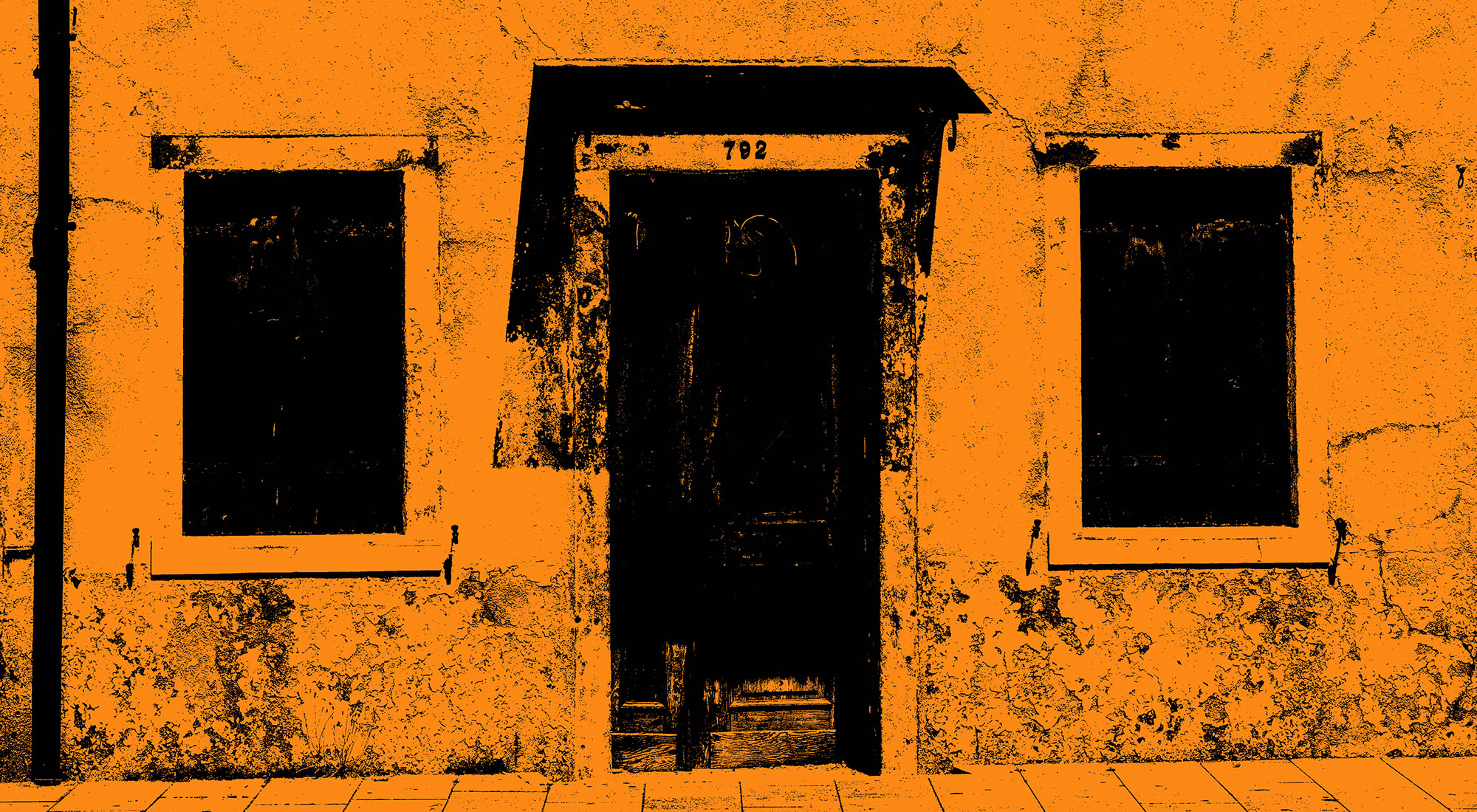In this special Halloween-themed edition of Work in Progress, we feature the voices of our growing list of female authors who explore the otherworldly and spooky side of literature in innovative and chilling ways. We asked them to write about the scariest story (book, film, art, etc.) by a woman that they’ve ever encountered, and their responses span mediums, genres, and time periods. We’re pleased to present their varied recommendations on the macabre.
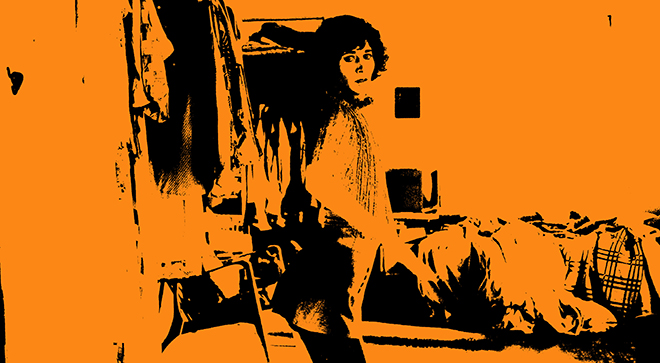 Miranda July’s The Future
Miranda July’s The Future
Ling Ma ● Author of Severance
I almost walked out of the theater when I first watched The Future at the Music Box in Chicago, but it is a film that has stayed with me ever since and deepened with every viewing. Critically undersung, Miranda July’s second feature possesses darker shades of melancholia and angst than its predecessor. The Future is about a couple, both thirty-five years old, who decide to shake up their lives by quitting their jobs and giving themselves thirty days to pursue their passions. Instead of going through the usual motions of a midlife crisis, however, each character seems to spiral off into alternate universes altogether, making seemingly innocuous moves that take them further and further afield. While more surreal than supernatural, this harrowing, sci-fi-tinged portrait of existential crisis haunted me in a way I couldn’t shake for years. If you make a change for yourself, the film seems to say, ultimately the pieces will fall where they may and you won’t be able to put things back the way they used to be. It is irrevocable. I wonder if I’m putting viewers off the film rather than endorsing it, so let me also mention that it’s narrated by a wounded stray cat, which is just July doing her best craggy old lady voice.
And now, let’s present a scene from the movie without context here.
 Miranda Aldhouse-Green’s Bog Bodies Uncovered
Miranda Aldhouse-Green’s Bog Bodies Uncovered
Sarah Moss ● Author of Ghost Wall
Bog Bodies Uncovered could be described as an archaeology textbook, but it’s written with a mixture of factual research and scholarly hypothesis that I find as chilling as the most carefully controlled fiction. Bog Bodies are the corpses of Iron Age sacrificial victims in northern Europe, preserved by the peat of the bogs into which they were thrown not-quite-dead after imaginative torture. Found through the centuries by people digging for peat to burn, the bog people reappear among us with facial expressions, fingerprints, and hair arranged as it was styled on their last days of life. Aldhouse-Green puts together a lifetime’s experience and reflection on prehistoric European ritual and shamanism with recent developments in forensic archaeology to suggest that the bog people were deliberately held between life and death for certain periods of time, that the bodies would have lain visible in shallow water, perhaps regularly visited, for years, that their killers were playing with time, arresting bodies at the moment of death for millennia to come. The book’s close, scientific attention to the organization of ritual murder is calmly terrifying, and it was one of the most important inspirations for my novel, Ghost Wall.
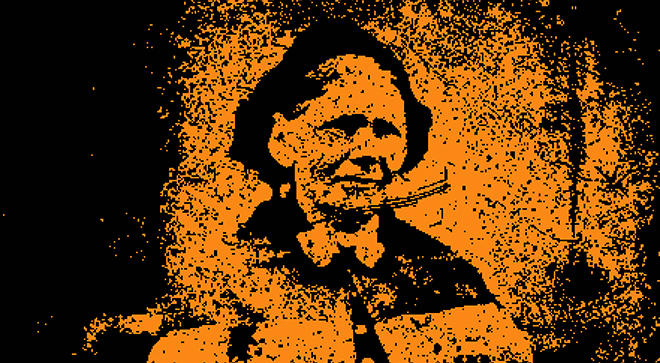 Sarah Waters’s Affinity
Sarah Waters’s Affinity
Christobel Kent ● Author of The Day She Disappeared
There are many contenders for the most frightening book by a woman. But I would choose here a deceptively quiet book by Sarah Waters, her second novel Affinity. Set in the sinister, claustrophobic world of Victorian spiritualism, it deals with the tense and dangerous relationship that develops between a well-bred unmarried young lady prison visitor and a medium imprisoned for assault. So extraordinarily skilled is Waters—like the great Shirley Jackson—at evoking psychic fear, the glittering, humming miasma that is madness, at bringing it to hover just on the edge of vision that the reader, however skeptical, however rational, ends by closing the book in terror, with the certainty that beneath the daylight world lies a constant other, seductive, compelling, and hideous.
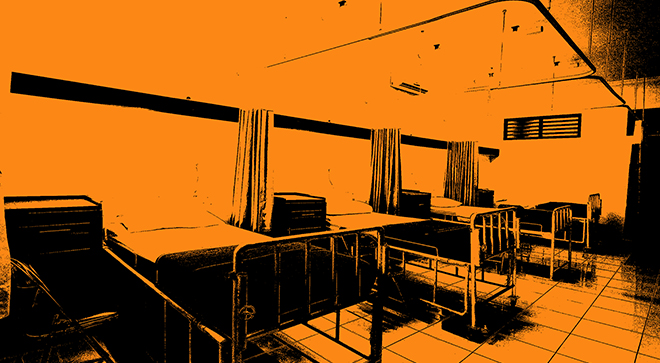 Samanta Schweblin’s Fever Dream
Samanta Schweblin’s Fever Dream
Shirley Barrett ● Author of The Bus on Thursday
“I call it the ‘rescue distance’: that’s what I’ve named the variable distance separating me from my daughter, and I spend half the day calculating it, though I always risk more than I should.”
The daughter, Nina, is only small: her mother frets continually about this rescue distance as the horrors mount in this truly disturbing, nightmarish book that, yes, feels exactly like a fever dream if our fever dreams were half as imaginative. It’s written as a two-hander, a dialogue between the unnamed mother now mysteriously marooned in the emergency clinic and a small boy named David, who is urgently, impatiently interrogating her. It’s apparent that she will die soon, but what has become of Nina? I read the whole book with a ghastly maternal anxiety gripping my heart—stay closer to Nina, I wanted to cry, don’t let that rescue distance slacken! Suspenseful and dread-filled, this book races along to its remorseless conclusion. It’s extraordinary.
 Florence + the Machine’s “Breaking Down”
Florence + the Machine’s “Breaking Down”
Katrina Carrasco ● Author of The Best Bad Things
I’m not one to seek out scary books or movies (my Halloween movie of choice is The Nightmare Before Christmas), but I do enjoy art that creates uneasiness. Something I find pleasingly creepy is the Florence + the Machine song “Breaking Down,” which tells the story of something that is haunting the speaker, something only she can see. It smiles at her; it waits in the dark, in the corners, until she is alone. Perhaps the lyrics are meant to be about anxiety, or depression, but to me the song also conjures something more sinister—the feeling of being watched, of sitting in an empty room but hearing a small sound, seeing a twitch out of the corner of your eye. The little tricks the brain plays on itself (or something else?). The song isn’t really scary on its own, but making a story out of it, imagining the “what if …”s it proposes—that’s just unsettling enough for me.
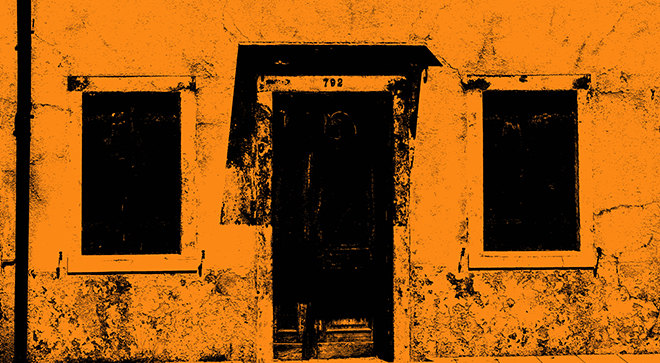 Mariana Enríquez’s “Adela’s House”
Mariana Enríquez’s “Adela’s House”
Laura van den Berg ● Author of The Third Hotel
In Mariana Enríquez’s “Adela’s House,” which can be found in her spectacular collection Things We Lost in the Fire, a brother and sister enter a derelict house, along with their neighbor, Adela. The house quickly proves to be nightmarish, possessed with its own terrible life force; once inside Adela is never seen again. While the plot summary of “Adela’s House” might sound like a conventional haunted house tale, Enríquez is after something far more charged. In her translator’s note, Megan McDowell notes that “What there is of gothic horror in the stories in Things We Lost in the Fire mingles with and is intensified by their sharp social criticism . . . most of Mariana’s characters exist in a border space between the comfortable here and a vulnerable there; this latter could be a violent slum or a mysteriously living house, but it operates according to an unknown and sinister rationale, and it is frighteningly near.” In Enríquez’s hands, the house at the center of “Adela’s House” is a conduit for exploring both individual and collective trauma, for showing us just how close at hand the ghosts of the past are.
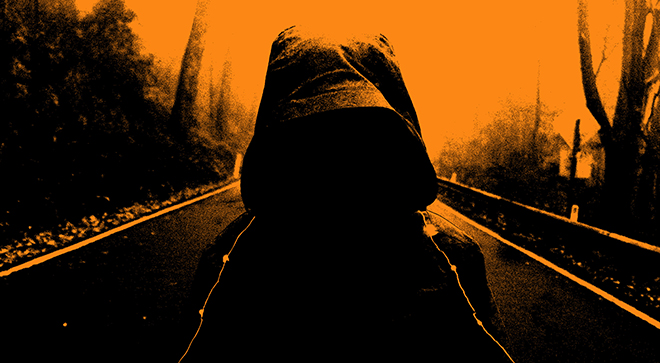 Rosemary Timperley’s “Harry”
Rosemary Timperley’s “Harry”
Jac Jemc ● Author of The Grip of It
I loved scary stories as a kid and while many have stuck in my head, the most haunting is Rosemary Timperley’s “Harry”. The story is told from the perspective of a mother whose five-year-old daughter grows an attachment to an imaginary friend, a red-haired man named Harry, whom she only engages outside. The mother tries to write off what she believes to be her irrational misgivings about Harry, but as the story progresses, increasingly legitimate reasons for her fear develop. My sister had an imaginary friend named Camilla at the time, so perhaps that’s why the story affected me so deeply, but I’ve returned to the tale again and again to examine the way Timperley balances the mother’s emotional impulses with her rational mind. Timperley wrote over seventy books between the 1940s and 1980s, but I rarely hear her mentioned in discussions of either horror or literary fiction. Here’s hoping this summons her ghost back into the conversation.
 Shirley Jackson’s Hangsaman
Shirley Jackson’s Hangsaman
Amina Cain ● Author of Indelicacy
Though Shirley Jackson’s The Haunting of Hill House is probably the scariest novel I’ve ever read, most readers know of it already, and now there’s a Netflix TV show based on it (which, for now, I am refusing to watch). Less widely read, but just as intriguing and eerie, is Jackson’s Hangsaman, originally published in 1951, eight years before Hill House. The novel tells the story of Natalie Waite as she begins college, and was inspired by the real-life disappearance of a young female student from Bennington. What makes the novel especially chilling is that Jackson seemed to know almost intuitively, and with a well of darkness and a kind of awe, what disappearing might feel like, what the experience itself is like. From the novel: “Everything’s waiting for me to go away.”
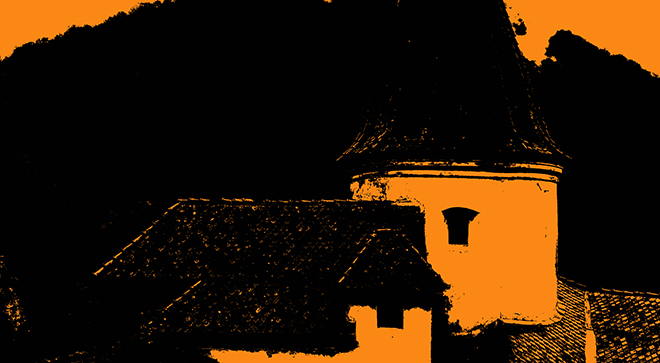 Angela Carter’s “The Bloody Chamber”
Angela Carter’s “The Bloody Chamber”
Araminta Hall ● Author of Our Kind of Cruelty
Angela Carter’s “The Bloody Chamber” is a story that is truly terrifying on every level. Written in the gothic tradition, it has all the hallmarks of spine-chilling horror: at the turn of the century a young, virgin bride travels to her much older new husband’s ancestral home, where she is forced to admit to his true perverted nature. The pages drip with imagery of violence and death, with the profusion of funereal lilies, the rubies he forces her to wear around her throat that remind her of the guillotine, and the isolated castle with its cavernous dungeons and gaoler’s keys. And then of course there is the actual bloody chamber, a room he has designed specifically in which to torture and murder women, a room that contains the mangled bodies of his three previous wives. As vivid and shocking as these depictions of depravity are, however, the true horror lies in what is not said. It soon becomes clear that all the staff in the castle know how the Marquis likes to behave and, as our nameless heroine says, she doesn’t see the point in trying to escape because even if anyone believed her they would no doubt be loyal to her husband, the richest man in France—a suspicion that is cemented when she hears the story of another Marquis who likes to hunt women like foxes, decapitating them, and preserving their heads. Women and the lower classes simply have no agency in this world; they are completely disposable, simple playthings. For me, the Marquis in this story is a living embodiment of the patriarchy, a rich and privileged white man who is above the law and accepted mores of society. Once you become this powerful it seems you can do as you please, and power and wealth like this appear only to corrupt. But, before you think it all sounds too relentlessly bleak, one of the best reasons to read this story is for the ending, a suggestion of what can happen when women listen to each other and come together, when they take back a bit of agency and power and create something good out of something terrible. Perhaps the real horror of this story lies in the fact that it is still so relevant, forty years after it was written and a century after it was set.
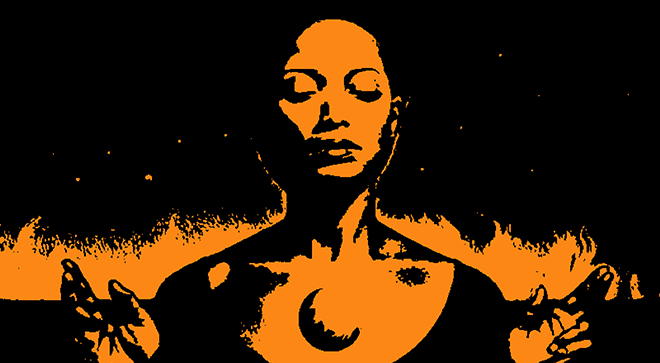 Octavia Butler’s Parable of the Sower
Octavia Butler’s Parable of the Sower
Madeline ffitch ● Author of Stay and Fight
Much scarier, a friend told me, than an actual monster—a werewolf or zombie for example—is someone who isn’t a monster but who behaves in every way like a monster. The thought of such a figure was enough to keep my friend up at night, he admitted, to sleep with all the lights on.
I was reminded of his particular fear recently when I read Octavia Butler’s Parable of the Sower for the first time. There’s a lot about the book that’s scary, and not in a delightful, shivery, Halloween way. More in a dull-dread-pit-of-your-stomach way. Butler’s apocalyptic vision creeps up on you with its undeniable familiarity, its likelihood, as if it’s already happening, and we’re already committed.
One of the more terrifying creations in this book are the paints, not characters exactly, more like an awful chorus always on the periphery, sometimes looming close. As one character describes them:
“Paints. They shave off all their hair—even their eyebrows—and they paint their skin green or blue or red or yellow . . . they take that drug that makes them like to watch fires. Sometimes a camp fire or a trash fire or house fire. Or sometimes they grab a rich guy and set him on fire . . . Sometimes the paints like the fire so much they get too close to it. Then their friends don’t even help him. They just watch him burn.”
Maybe it’s the sickening glimmer of logic in the Paints that makes them so chilling. Change is key in this book. The characters we love learn to ride with change rather than fight it. They rely on each other, care for each other, and fight for each other. They adapt to survive. The Paints present a poisoned, deadened version of this. They operate by a sort of brutally pragmatic teamwork. They’re not wrong to be in despair, and they’re not wrong, in a society of lethal resource hoarding, to target the rich. The way that they adapt to the dissipating world is by seeing themselves and everyone else as disposable, by becoming monsters, unrecognizable even to each other.
 Marlen Haushofer’s The Wall
Marlen Haushofer’s The Wall
Jessi Stevens ● Author of The Exhibition of Persephone Q
When the news amounts to a metafictional horror story—when everything is a fiction—I find that the stories that scare me most are those that reach for unqualified truth. Marlen Haushofer’s 1963 novel The Wall tells the story of an unnamed woman who finds herself the sole survivor of a nuclear disaster. Away on a weekend trip in the Austrian Alps when the apocalypse arrives, she is trapped in a section of woodland that has been protected from oblivion by an invisible “wall.” What follows is a tale of isolation, fragility, and intimacy, as she cultivates tender relationships with the animals and plants that keep her alive. Haushofer presents the horror story of human demise in the tradition of women’s “domestic” fiction—the primary concerns are often kitchen-related, revolving around flour rations and potato gardens and keeping the cow alive. It is the narrow margin separating survival and death, rather than suspenseful twists in a dystopian plot, which generates the novel’s sense of terror. That’s not to say there aren’t surprises: a devastating turn reminds us of one of humankind’s more enduring truths—that the greatest threat to man’s survival is other men.
 Marina de Van’s In My Skin
Marina de Van’s In My Skin
Maryse Meijer ● Author of Rag
Marina de Van starred in, wrote, and directed this graphic, unbearably intimate story of Esther, who, after receiving a gruesome injury to her leg at a party, becomes obsessed with the look, feel, and eventually taste of her own mutilated flesh. Unable to let her wound heal, she becomes increasingly alienated from the people in her life as she pursues a passion no one else can understand. I’ve seen the first three quarters of the film at least a dozen times; but I’ve never been able to watch the last scene (which features an act of protracted self-cannibalism) in its entirety. But what makes this film so terrifying is that Esther’s obsession isn’t about gore, or self-hatred; it’s about a desperate attempt to find love. The protagonist, unfulfilled by relationships and friendships mired in misogyny and falsity, has no one to turn to but herself for comfort; as the movie goes on, Esther’s actions start to seem like a totally sane response to a fucked up world. There’s something about this film that has rung eerily true for me for fifteen years—proving that body horror is much more than skin deep.
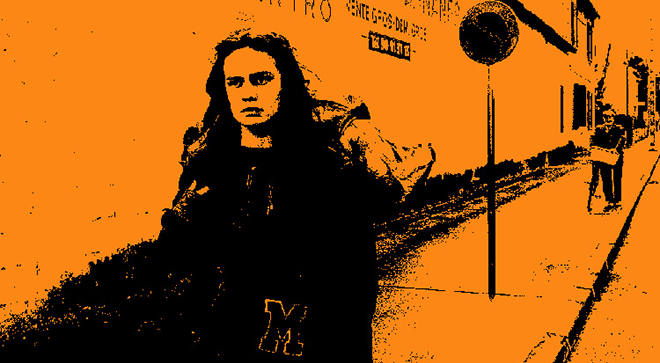 Agnes Varda’s Vagabond
Agnes Varda’s Vagabond
Joni Murphy ● Author of Talking Animals
So many horror stories operate under the assumption that the heroine wishes to survive, and that the audience will follow her violent confrontations with monsters and men just to make sure she does. The structure of so much horror tells us that the answer is yes to life, at any cost. Agnes Varda’s film Vagabond is a refusal of this formulation, but it is another, better kind of horror story. It poses questions about what existence and freedom are worth. Varda’s anti-heroine struggles but doesn’t live. She chooses to die facing a freezing night sky. I watched this film with white knuckles, not because I could hope for the wanderer’s survival, but because I knew what kind of tortures society conjures for a woman relying entirely on herself. As frightening as it is, I need this vagabond turn more than I need the blood of other horror. I need to see the terrible possibilities of being held in the world, along with a woman’s fatal desire to struggle free.
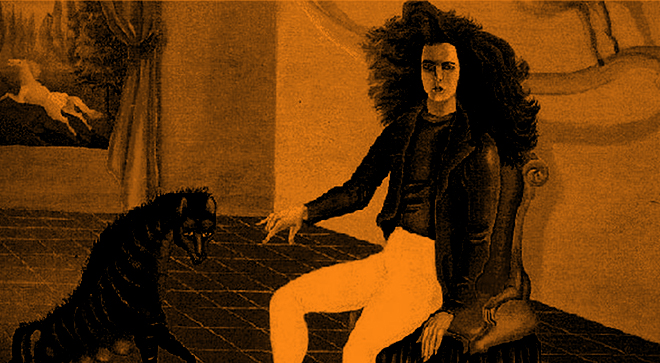 Leonora Carrington’s The Complete Stories
Leonora Carrington’s The Complete Stories
Liska Jacobs ● Author of Catalina
For me, the scariest thing is the madness that exists in our own minds. How quickly fantasy and reality can collide, or a dream can turn into a nightmare. Leonora Carrington’s gothic short stories live in that space. Influenced by fairy tales and Irish myths, Mayan mystical writing and alchemy, they can take on a deceptive dream-like quality. Talking animals, vegetables come to life, even a hyena takes the place of a debutante at a ball. But then madness, human cruelty, and the bizarre seep in. Also well-known as an artist, Carrington’s surrealist paintings depict similar occult themes, often women who look as if captured in the moment of transformation—from human to specter, or maybe something darker, without form or shape. In my favorite short story of hers, two monstrous sisters prepare for a feast, and while one is lost in opulent desire for food and sex and nature, the other kills a servant and drinks her blood, which transforms her. “She sucked, sucked for long minutes, and her body became enormous, luminous, magnificent. Her feathers shone like snow in the sun, her tail sparkled with all the colors of the rainbow. She threw back her head and crowed like a cock.” The macabre becomes beauty incandescent, like a haunted fever dream.
